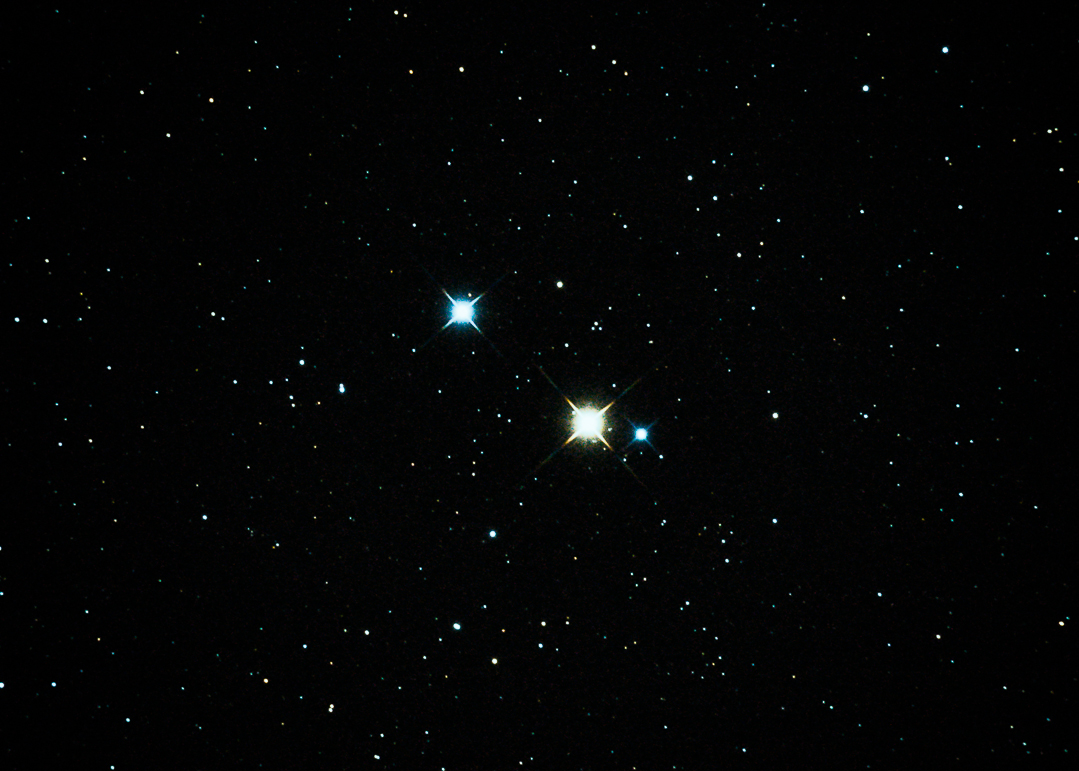|
Girl (Chinese Constellation)
The Girl mansion (女宿, pinyin: Nǚ Xiù) is one of the Twenty-eight mansions of the Chinese constellation Traditional Chinese astronomy has a system of dividing the celestial sphere into asterisms or constellations, known as "officials" ( Chinese ''xīng guān''). The Chinese asterisms are generally smaller than the constellations of Hellenisti ...s. It is one of the northern mansions of the Black Tortoise. Asterisms Notes {{Chinese constellation Chinese constellations ... [...More Info...] [...Related Items...] OR: [Wikipedia] [Google] [Baidu] |
Yan (state)
Yan (; Old Chinese pronunciation: ''*'') was an ancient Chinese state during the Zhou dynasty. Its capital was Jicheng (Beijing), Ji (later known as Yanjing and now Beijing). During the Warring States period, the court was also moved to another capital at Xiadu at times. The history of Yan began in the Western Zhou in the early first millennium BC. After the authority of the Zhou king declined during the Spring and Autumn period in the 8th century BC, Yan survived and became one of the strongest states in China. During the Warring States period from the 5th to 3rd centuries BC, Yan was one of the last states to be conquered by the armies of Qin Shihuang: Yan fell in 222 BC, the year before the declaration of the Qin dynasty, Qin Empire. Yan experienced a brief period of independence after the collapse of the Qin dynasty in 207 BC, but it was eventually absorbed by the victorious Western Han dynasty, Han. During its height, Yan stretched from the Yellow River to the Yalu River ... [...More Info...] [...Related Items...] OR: [Wikipedia] [Google] [Baidu] |
Tau Cygni
Tau Cygni, Latinised from τ Cygni, is a binary star system in the constellation Cygnus, approximately 69 light years away from Earth. This visual binary system has a period of 49.6 years. The main star, 4th magnitude GJ 822.1 A, is a yellowish white subgiant star of the spectral type F2IV. It therefore has a surface temperature of 6,000 to 7,500 kelvins and is larger, hotter, and several times as bright as the Sun. Its companion, 6th magnitude GJ 822.1 B, is a yellow main sequence In astronomy, the main sequence is a classification of stars which appear on plots of stellar color index, color versus absolute magnitude, brightness as a continuous and distinctive band. Stars on this band are known as main-sequence stars or d ... star of the spectral type G0V. It is similar to the Sun in size, surface temperature, and luminosity. Tau Cygni is classified as a δ Scuti variable. The magnitude range is given as 3.65 to 3.75, which is the combined magnitude for both com ... [...More Info...] [...Related Items...] OR: [Wikipedia] [Google] [Baidu] |
Nu Cygni
Nu Cygni, Latinized from ν Cygni, is a binary star system in the constellation Cygnus. Its apparent magnitude is 3.94 and it is approximately 374 light years away based on parallax. The brighter component is a magnitude 4.07 A-type giant star with a stellar classification of A0III n, where the 'n' indicates broad "nebulous" absorption lines due to rapid rotation. This white-hued star has an estimated 3.6 times the mass of the Sun and about times the Sun's radius. It is radiating 412 times the Sun's luminosity from its photosphere at an effective temperature of 9,462 K. The magnitude 6.4 companion has an angular separation Angular distance or angular separation is the measure of the angle between the orientation of two straight lines, rays, or vectors in three-dimensional space, or the central angle subtended by the radii through two points on a sphere. When t ... of 0.24 " from the primary. Notes References {{Stars of Cygnus Cygnus (constellatio ... [...More Info...] [...Related Items...] OR: [Wikipedia] [Google] [Baidu] |
Alpha Cygni
Deneb () is a blue supergiant star in the constellation of Cygnus. It is the brightest star in the constellation and the 19th brightest in the night sky, with an apparent magnitude slightly varying between +1.21 and +1.29. Deneb is one of the vertices of the asterism known as the Summer Triangle and the "head" of the Northern Cross. Its Bayer designation is α Cygni, which is Latinised to Alpha Cygni, abbreviated to Alpha Cyg or α Cyg. Deneb rivals Rigel, a closer blue supergiant, as the most luminous first-magnitude star. However, its distance, and hence luminosity, is poorly known; its luminosity is estimated to be between 55,000 and 196,000 times that of the Sun. Distance estimates range from 1,400 to 2,600 light-years; assuming its highest value, it is the farthest star with an apparent magnitude brighter than 2.50. Nomenclature ''α Cygni'' (Latinised to ''Alpha Cygni'') is the star's designation given by Johann Bayer in 1603. The traditional name ''Deneb ... [...More Info...] [...Related Items...] OR: [Wikipedia] [Google] [Baidu] |
30 Cygni
30 Cygni (ο1 Cygni) is a class A5III (white giant) star in the constellation Cygnus. Its apparent magnitude is 4.83 and it is approximately 610 light years away based on parallax. The Bayer letter ο (omicron) has been variously applied to two or three of the stars 30, 31, and 32 Cygni. 30 Cygni has sometimes been designated as ο1 Cygni with the other two stars being ο2 and ο3 respectively. For clarity, it is preferred to use the Flamsteed designation A Flamsteed designation is a combination of a number and constellation name that uniquely identifies most naked eye stars in the 88 modern constellations, modern constellations visible from southern England. They are named after John Flamsteed, au ... 30 Cygni rather than one of the Bayer designations. 30 Cygni is about six arc-minutes from 31 Cygni A and seven arc-minutes from 31 Cygni B. That pair is known as ο1 Cygni, while ο2 Cygni is a degree away. Both ο1 and ο2 are 4th magnitude stars. References {{ ... [...More Info...] [...Related Items...] OR: [Wikipedia] [Google] [Baidu] |
Delta Cygni
Delta Cygni is a binary star of a combined third-magnitude in the constellation of Cygnus (constellation), Cygnus. It is also part of the Northern Cross (asterism), Northern Cross Asterism (astronomy), asterism whose brightest star is Deneb. Its name is a Bayer designation that is Romanization of Greek, Latinized from δ Cygni, and abbreviated Delta Cyg or δ Cyg. Based upon stellar parallax, parallax measurements obtained during the Hipparcos mission, Delta Cygni is located roughly distant from the Sun. Delta Cygni's two components are designated Delta Cygni A (officially named Fawaris ) and B. More widely separated is a faint third component, a 12th magnitude star that is moving along with the others. Together they form a triple star system. Nomenclature ''δ Cygni'' (Latinisation of names, Latinised to ''Delta Cygni'') is the binary's Bayer designation. The designations of the two components as ''Delta Cygni A'' and ''B'' derive from the convention used by the W ... [...More Info...] [...Related Items...] OR: [Wikipedia] [Google] [Baidu] |
Gamma Cygni
Gamma Cygni is a star in the northern constellation of Cygnus, forming the intersection of an asterism of five stars called the Northern Cross. It is officially named Sadr , gamma Cygni is its Bayer designation, which that is Latinized from γ Cygni, and abbreviated Gamma Cyg or γ Cyg. Based upon parallax measurements obtained during the Hipparcos mission, it is approximately 1,800 light-years (560 parsecs) from the Sun. It forms the primary or 'A' component of a multiple star system designated WDS J20222+4015 (the secondary or 'BCD' component is WDS J20222+4015BCD, a close triplet of stars 41" away from γ Cygni). Nomenclature ''γ Cygni'' ( Latinised to ''Gamma Cygni'') is the star's Bayer designation. WDS J20222+4015A is its designation in the Washington Double Star Catalog. It bore the traditional name ''Sadr'' (also rendered ''Sadir'' or ''Sador''), derived from the Arabic صدر ''ṣadr'' "chest", the same word which gave rise to the star Schedar ( ... [...More Info...] [...Related Items...] OR: [Wikipedia] [Google] [Baidu] |
Delphinus
Delphinus is a small constellation in the Northern Celestial Hemisphere, close to the celestial equator. Its name is the Latin version for the Greek word for dolphin (). It is one of the 48 constellations listed by the 2nd-century astronomer Ptolemy, and remains one of the 88 modern constellations recognized by the International Astronomical Union. It is one of the smaller constellations, ranked 69th in size. Delphinus' five brightest stars form a distinctive asterism symbolizing a dolphin with four stars representing the body and one the tail. It is bordered (clockwise from north) by Vulpecula, Sagitta, Aquila, Aquarius, Equuleus and Pegasus. Delphinus is a faint constellation with only two stars brighter than an apparent magnitude of 4, Beta Delphini (Rotanev) at magnitude 3.6 and Alpha Delphini (Sualocin) at magnitude 3.8. Mythology Delphinus is associated with two stories from Greek mythology. According to myth, the first Greek god Poseidon wanted to marry Amphitrite, ... [...More Info...] [...Related Items...] OR: [Wikipedia] [Google] [Baidu] |
Aquila (constellation)
Aquila is a constellation on the celestial equator. Its name is Latin for 'eagle' and it represents the bird that carried Zeus/Jupiter's thunderbolts in Greco-Roman mythology, Greek-Roman mythology. Its brightest star, Altair, is one vertex of the Summer Triangle asterism (astronomy), asterism. The constellation is best seen in the northern summer, as it is located along the Milky Way. Because of this location, many clusters and planetary nebula, nebulae are found within its borders, but they are dim and galaxies are few. History Aquila was one of the 48 constellations described by the second-century astronomer Ptolemy. It had been earlier mentioned by Eudoxus of Cnidus, Eudoxus in the fourth century BC and Aratus in the third century BC. It is now one of the 88 constellations defined by the International Astronomical Union. The constellation was also known as ''Vultur volans'' (the flying vulture) to the Ancient Rome, Romans, not to be confused with ''Vultur cadens'' which wa ... [...More Info...] [...Related Items...] OR: [Wikipedia] [Google] [Baidu] |
Capricornus
Capricornus is one of the constellations of the zodiac. Its name is Latin for "horned goat" or "goat Horn (anatomy), horn" or "having horns like a goat's", and it is commonly represented in the form of a sea goat: a mythical creature that is half goat, half fish. Capricornus is one of the 88 modern constellations, and was also one of the 48 constellations listed by the 2nd century astronomer Ptolemy, Claudius Ptolemy. Its old astronomical symbol is (♑︎). Under its modern boundaries it is bordered by Aquila (constellation), Aquila, Sagittarius (constellation), Sagittarius, Microscopium, Piscis Austrinus, and Aquarius (constellation), Aquarius. The constellation is located in an area of sky called the Sea (astronomy), Sea or the Water, consisting of many water-related constellations such as Aquarius, Pisces (constellation), Pisces and Eridanus (constellation), Eridanus. It is the smallest constellation in the zodiac. Notable features Stars Capricornus is a faint ... [...More Info...] [...Related Items...] OR: [Wikipedia] [Google] [Baidu] |
Zhou Dynasty
The Zhou dynasty ( ) was a royal dynasty of China that existed for 789 years from until 256 BC, the longest span of any dynasty in Chinese history. During the Western Zhou period (771 BC), the royal house, surnamed Ji, had military control over territories centered on the Wei River valley and North China Plain. Even as Zhou suzerainty became increasingly ceremonial over the following Eastern Zhou period (771–256 BC), the political system created by the Zhou royal house survived in some form for several additional centuries. A date of 1046 BC for the Zhou's establishment is supported by the Xia–Shang–Zhou Chronology Project and David Pankenier, but David Nivison and Edward L. Shaughnessy date the establishment to 1045 BC. The latter Eastern Zhou period is itself roughly subdivided into two parts. During the Spring and Autumn period (), power became increasingly decentralized as the authority of the royal house diminished. The Warring States ... [...More Info...] [...Related Items...] OR: [Wikipedia] [Google] [Baidu] |






